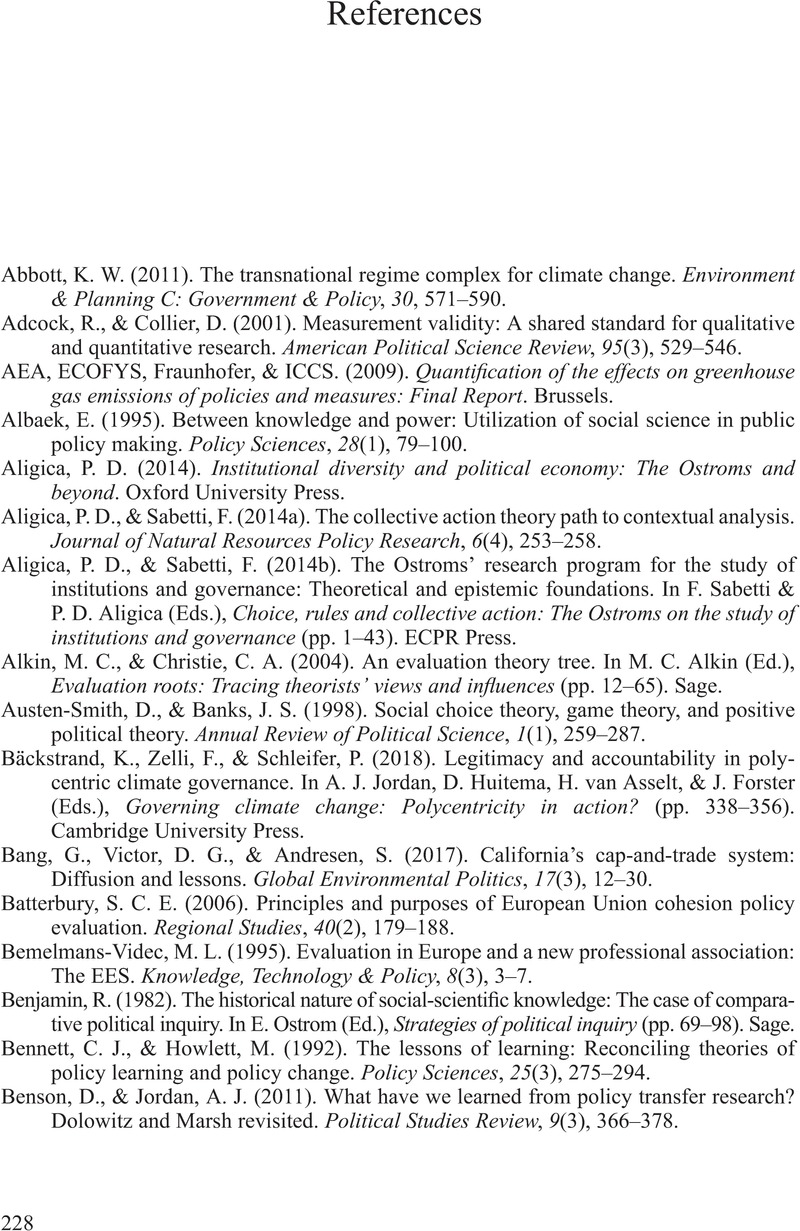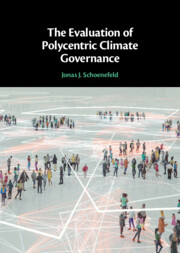Book contents
- The Evaluation of Polycentric Climate Governance
- The Evaluation of Polycentric Climate Governance
- Copyright page
- Contents
- Figures
- Tables
- Preface
- Abbreviations
- 1 Introduction
- 2 Policy Evaluation in Polycentric Governance Systems
- 3 Climate Policy Evaluation: The EU Level, Germany, and the UK
- 4 State-Funded Evaluation
- 5 Society-Funded Evaluation
- 6 Comparing State-Funded and Society-Funded Evaluation
- 7 Evaluation in Polycentric Governance: A Theoretical Analysis
- 8 Conclusions and New Directions
- Book part
- References
- Index
- References
References
Published online by Cambridge University Press: 06 July 2023
- The Evaluation of Polycentric Climate Governance
- The Evaluation of Polycentric Climate Governance
- Copyright page
- Contents
- Figures
- Tables
- Preface
- Abbreviations
- 1 Introduction
- 2 Policy Evaluation in Polycentric Governance Systems
- 3 Climate Policy Evaluation: The EU Level, Germany, and the UK
- 4 State-Funded Evaluation
- 5 Society-Funded Evaluation
- 6 Comparing State-Funded and Society-Funded Evaluation
- 7 Evaluation in Polycentric Governance: A Theoretical Analysis
- 8 Conclusions and New Directions
- Book part
- References
- Index
- References
Summary

- Type
- Chapter
- Information
- The Evaluation of Polycentric Climate Governance , pp. 228 - 241Publisher: Cambridge University PressPrint publication year: 2023



